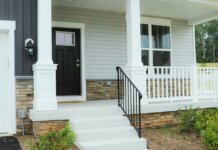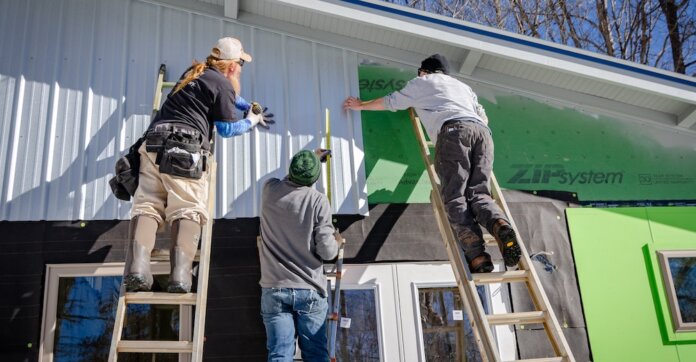Housing starts increased slightly in April, as builders continued to face significant economic uncertainty due to tariffs, in addition to supply and labor headwinds.
Starts were at a seasonally adjusted annual rate of 1.361 million in April, an increase of 1.6% compared with March but down 1.7% compared with April 2024, according to estimates from the U.S Census Bureau and the U.S. Department of Housing and Urban Development.
Starts of detached single-family homes were at a rate of 927,000, down 2.1% compared with March.
Starts of multifamily dwellings (five units or more per building) were at a rate of 420,000, an increase of 11.1% compared with March.
Regionally, and on a year-over-year basis, combined single-family and multifamily starts were up 19.8% in the Northeast, 4.4% in the Midwest and 3.4% in the West, but were down 7.4% in the South.
Building permits in April were at a seasonally adjusted annual rate of 1.412 million – down 4.7% compared with March and down 3.2% compared with April 2024.
Permits for single-family homes were at a rate of 922,000, down 5.1% compared with the previous month. Authorizations of units in buildings with five units or more were at a rate of 431,000, down 4.1% compared with March.
Regionally, and year-over-year, permits were down 20.3% in the Northeast, 3.8% in the South and 3.5% in the West, but were up 5.1% in the Midwest.
Housing completions in April were at a seasonally adjusted annual rate of 1.458 million, down 5.9% compared with the previous month and down 12.3% compared with April 2024.
“The decline in single-family housing starts in April mirrors builder sentiment, as elevated interest rates, uncertainty on the tariff front and rising construction costs are exacerbating housing affordability challenges,” says Buddy Hughes, chairman of the National Association of Home Builders (NAHB), in a statement. “In turn, this is making it more difficult for builders to deliver entry-level housing at a price point that is accessible to home buyers.”
“Economic uncertainty, especially around interest rates and inflation, continues to impact both builder financing costs and buyers’ ability to qualify,” adds Danushka Nanayakkara-Skillington, assistant vice president for forecasting and analysis for NAHB. “However, recent developments on the tariff front concerning the United Kingdom and China along with major tax legislation advancing in Congress should provide a boost to housing demand and positive momentum for the economy.”
In a separate statement, Odeta Kushi, deputy chief economist for First American, says this month’s report “was not a great one for single-family housing, with single-family starts, permits and completions all declining.”
“The slower pace of single-family permits suggests a reduced rate of single-family groundbreaking in the upcoming months, due to higher inventory levels in key markets and ongoing challenges with costs and affordability,” Kushi says. “However, there are reasons for cautious optimism as we approach the second half of the year. The long-term housing shortage, builders’ ability to offer incentives, and potentially less restrictive monetary policy could be tailwinds.”
“The decline in single-family home production aligns with souring builder sentiment,” Kushi says. “Builder sentiment in May dipped to the same level as in November 2023, equaling the lowest index value since December 2022. This growing pessimism was broad-based across all NAHB Housing Market Index components.”
“Builders’ growing the growing pessimism is partially driven by the increase in mortgage rates in April, which impacts both builder and buyer financing costs,” she adds. “Residential construction costs are still more than 40 percent higher compared to pre-pandemic levels and skilled labor shortages persist.”
“Policy uncertainty also weighs heavily on builder sentiment, with 78 percent of builders reporting difficulties pricing their homes recently due to uncertainty around material prices, according to NAHB,” Kushi says. “The recent announcement that the United States and China will reduce tariffs for 90 days may offer temporary relief and brighten the outlook.”











